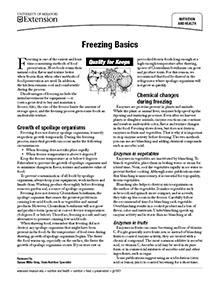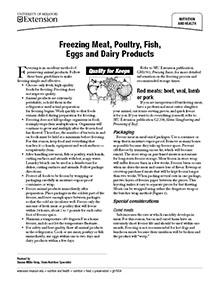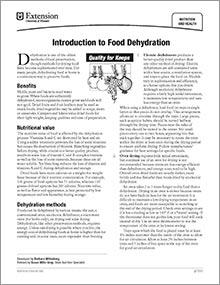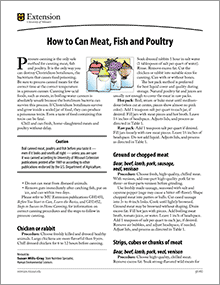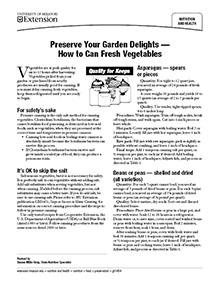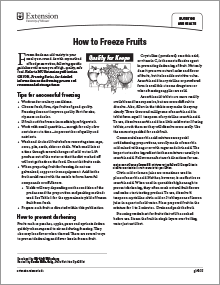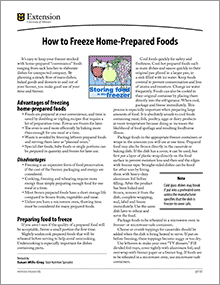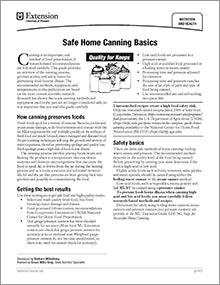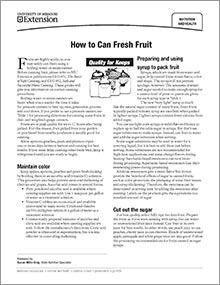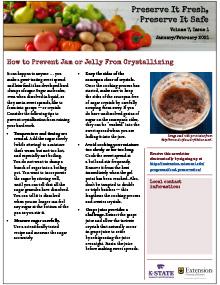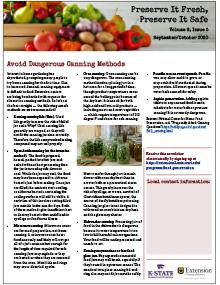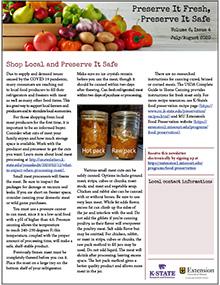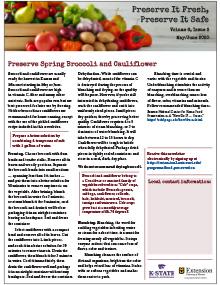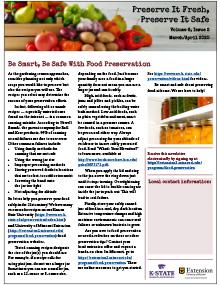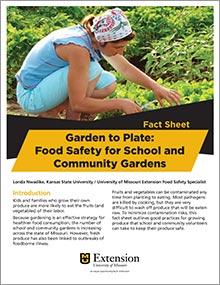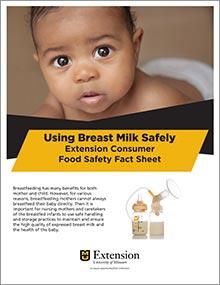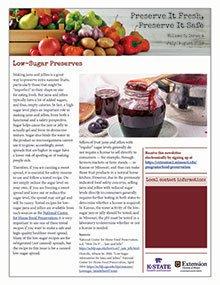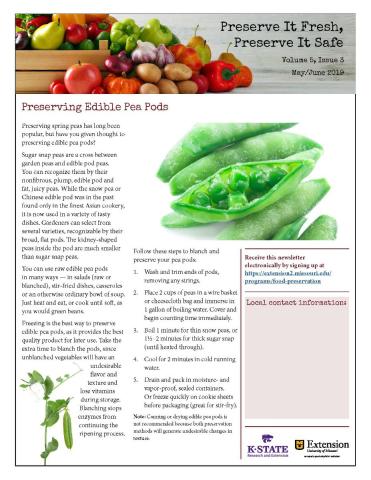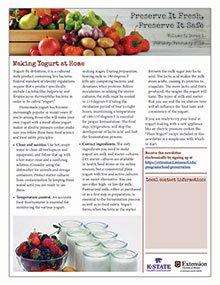The following publications cover topics related to Food Preservation. For a complete list of MU Extension publications, visit the main Publications page.
Freezing Basics
Reviewed
Freezing is one of the easiest and quickest methods of food preservation. Most foods retain their natural color, flavor and texture better when frozen than when other methods of food preservation are used. Learn the basics in this MU Extension guide.
How to Freeze Meat, Poultry, Fish, Eggs and Dairy Products
Revised
Freezing is an excellent method of preserving animal products. Follow these basic guidelines for simple, effective and safe freezing of meat, poultry, fish, eggs and dairy products.
Introduction to Food Dehydration
Dehydration is one of the oldest methods of food preservation, though methods for drying food have become sophisticated over time. Learn the benefits and methods of dehydrating foods and how to select an electric dehydrator.
How to Can Fresh Vegetables
Revised
Learn to safely can fresh vegetables in this research-based guide covering asparagus, beans, beets, carrots, corn, okra, peas, peppers, potatoes, pumpkins and spinach. Recommended pressure canner process times are provided.
How to Freeze Fruits
Reviewed
How to Dehydrate Foods
Revised
Dehydrated foods are a sensible way for busy families to make healthy, portable snacks or store seasonal produce for use. You need to carefully follow directions for preparing and pretreating produce to maintain quality.
Safe Home Canning Basics
Revised
Safely preserve fresh fruits and vegetables — and meat, poultry, seafood, soups and sauces — by the proper canning method: boiling water, steam or pressure. Learn the basics in this guide.
How to Can Fresh Fruit
Reviewed
Did you know there's more than one way to can fresh fruit? Learn the options and what they mean for your final color and taste.
Preserve It Fresh, Preserve It Safe: 2020, No. 6 (November/December)
New
Learn how to can water at home to prepare for an emergency and learn the benefits and drawbacks of raw packing and hot packing foods when home-canning in this University of Missouri Extension newsletter.
Preserve It Fresh, Preserve It Safe: 2020, No. 3 (May/June)
New
Get tips on freezing, dehydrating and blanching brocolli and cauliflower; a recipe for pickling cauliflower; and a warning about why so-called dry canning is not safe in this University of Missouri Extension newsletter.
Preserve It Fresh, Preserve It Safe: 2020, No. 1 (January/February)
New
Goulash is becoming a go-to dish for families again. Use this safe, tested recipe to prepare it for canning or for eating right away. Also, choose the pasta for your goulash from the descriptive list.
Garden to Plate: Food Safety for School and Community Gardens — Fact Sheet
New
Editor’s note
The following abstract describes a publication that is only available as a downloadable PDF.
Using Breast Milk Safely — Extension Consumer Food Safety Fact Sheet
New
Editor’s note
The following abstract describes a publication that is only available as a downloadable PDF.
Preserve It Fresh, Preserve It Safe: 2019, No. 2 (March/April)
New
Learn ways to serve and preserve strawberries. Try our Frozen Fruit Cups recipe. Get answers to some canning questions. Read this issue of Preserve It Fresh, Preserve It Safe by University of Missouri Extension.
